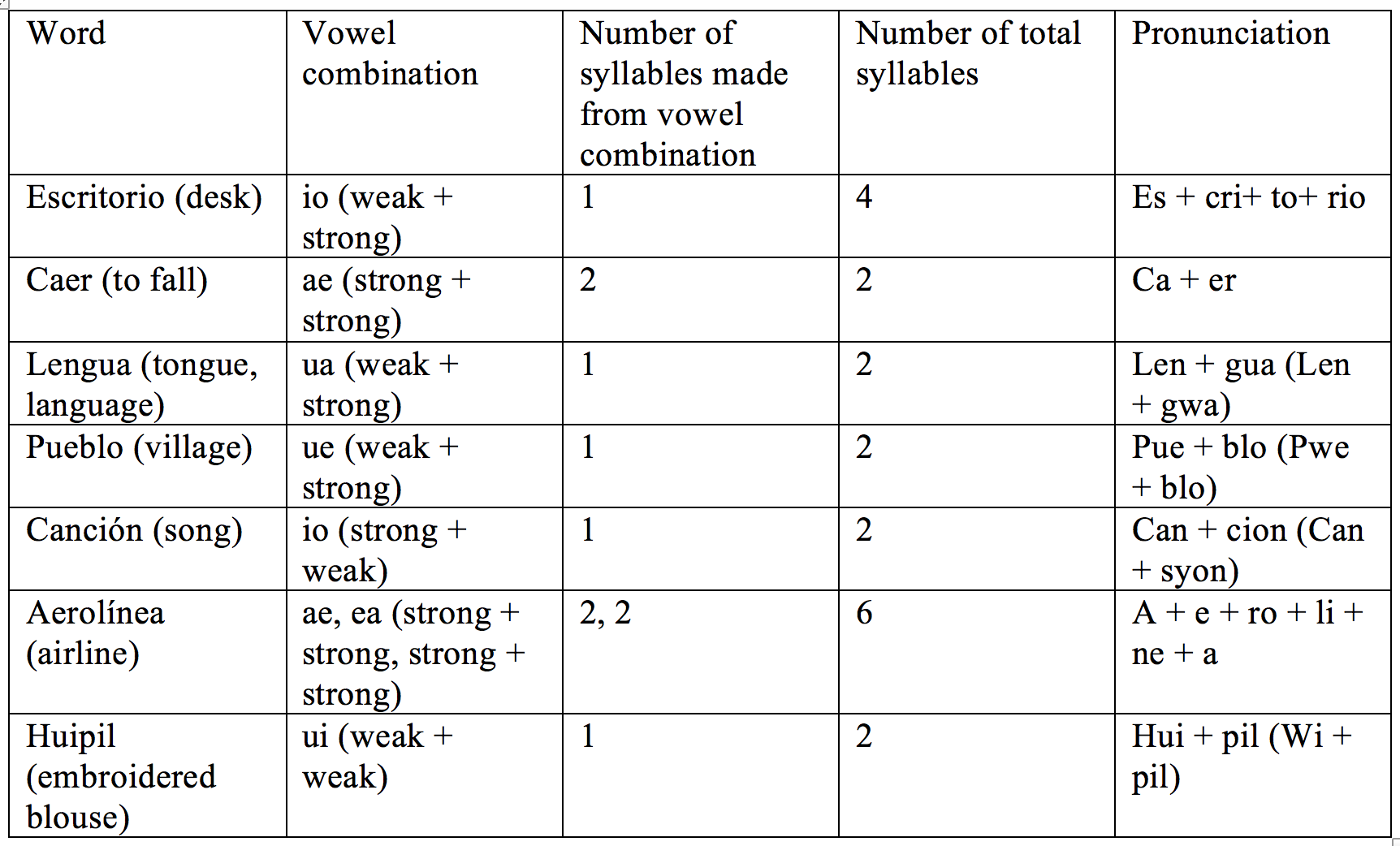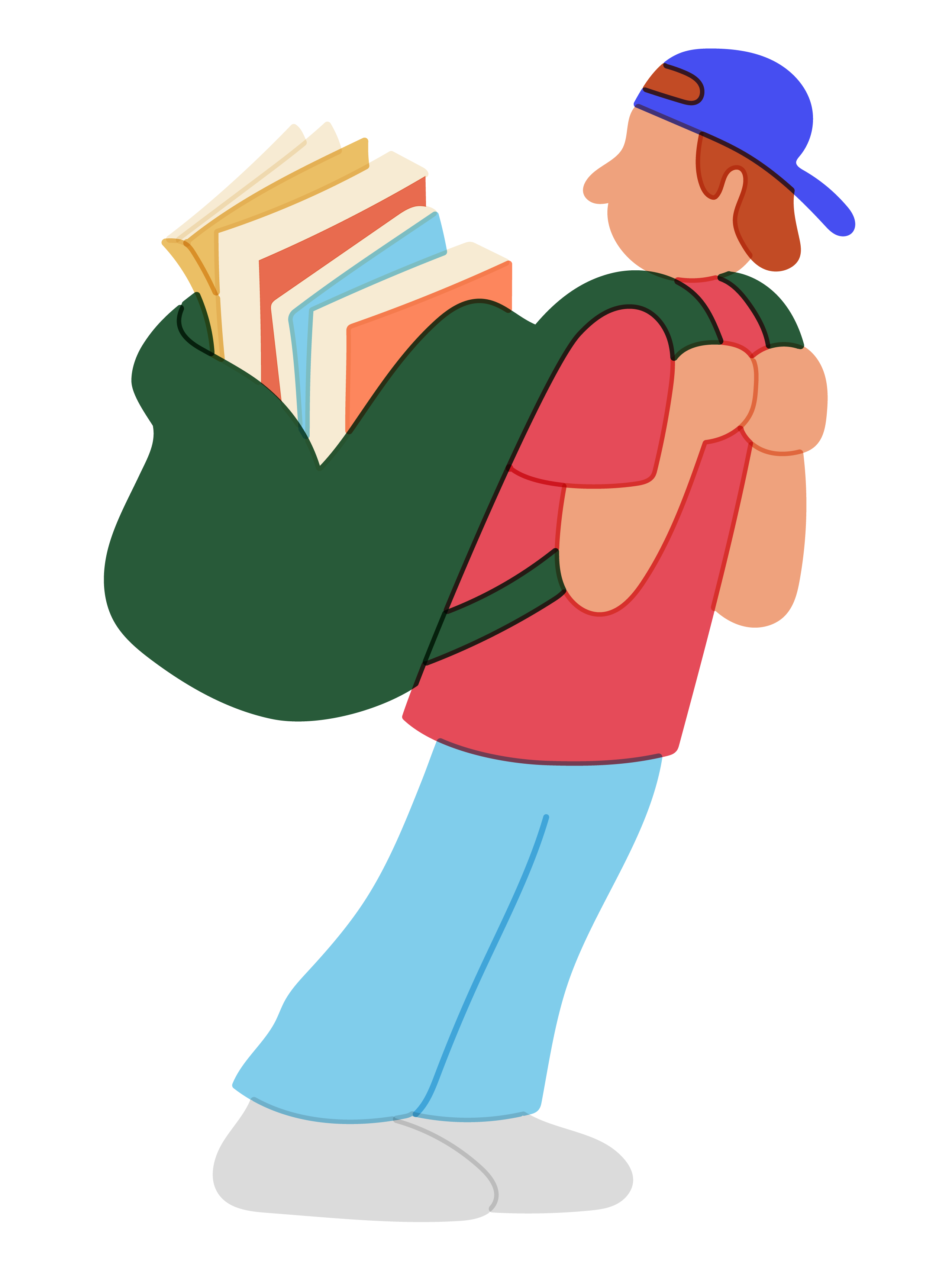 Ever wonder why when you try to imitate native Spanish speakers it just doesn’t come out right? It might have something to do with syllables!
Ever wonder why when you try to imitate native Spanish speakers it just doesn’t come out right? It might have something to do with syllables!
Vowels (vocales)
To begin, Spanish syllables are based on the behavior of the vowels, so let’s review those first: the basic vowels are a, e, i, o, u, like in English.
The vowels are divided into two categories, strong and weak.

Making syllables
Each vowel by itself counts, of course, as one syllable. Some examples:
Tú (you) = 1 syllable (one vowel sound)
Pensar (to think) = 2 syllables (2 vowel sounds)
Importante (important) = 4 syllables (4 vowel sounds)
Do you notice anything about the order of vowels and consonants in these words?
All of these words contain only 1 vowel surrounded by consonants. But what about words like escritorio, caer, lengua, pueblo, canción, aerolínea, and huipil with 2 consecutive vowels? How many syllables does each of these words have?
For this, we focus on the combinations of strong and weak vowels.

Let’s try the list of words above. escritorio, caer, lengua, pueblo, canción, aerolínea, and huipil
First, determine how many syllables are in each listed combination, io, ae, ua, ue, io, ea, ui.
Second, count the total syllables in each word. (Hint: ignore the acentos for this—they won’t impact the syllable count.)

Accent marks (acentos)
So, if these acentos don’t affect syllable count, why are they there?
1. They affect which syllable is stressed in pronunciation. More on this in a bit.
2. There are some acentos that will affect syllable count. Let’s talk about diphthong (diptongo) and hiatus (hiato). We’ll begin here.
Diphthongs we’ve actually already learned! Two vowels pronounced as one syllable is called a diphthong (diptongo). So, any strong + weak or weak + weak vowel combination (not strong + strong) is called a diphthong. This counts as 1 syllable. Escritorio, lengua, pueblo, canción, and huipil contain diphthongs.
The opposite of a diphthong is hiatus (hiato), meaning turning a one-syllable vowel combination (i.e., a diphthong) into two syllables. This is done using an accent mark (acento). Examples of hiato include día (day, pronounced di + a, 2 syllables), oír (to hear, pronounced o + ir, 2 syllables), and búho (owl, pronounced bu + o *remember that the h is silent*, 2 syllables).
Why does this matter?
The basic rule of Spanish pronunciation is: the stressed syllable is always the penultimate (second to last) syllable ONLY WHEN the word ends in N, S, or any vowel. Otherwise, the stressed syllable is the last syllable. An acento indicates breaking that rule. For example, nación (nation) has the spoken stress on the last syllable, ción. The stressed syllable should be the first one, na, but breaking that rule (because that’s just how it’s pronounced) means putting an acento on the ción part. (Bonus: if we put the acento on the i instead of the o in cion, we would be left with a hiatus, cíon, breaking the i and o into 2 syllables, rather than the natural diphthong (io) with a stress change to the last syllable.) However, when we pluralize nación to naciones, we lose the acento because the ción, the stressed syllable, is now the penultimate syllable where the stress falls by default.
Practice! ¡A practicar!
To review, then: can you determine how many syllables each of these words has and which is the stressed syllable in each of these words? Can you determine which of these words has diptongo or hiato?
Abeja (bee), baúl (trunk), callejuela (alley), mío (mine), esperanza (hope), estoico (stoic), escalofríos (goosebumps), aéreo (aerial), zaguán (hallway), veía (saw, 3rd person singular), reaccionar (to react)
Clave (Answer key)
The stressed syllable is in bold.
Abeja: 3 syllables, neither diptongo nor hiato
Baúl: 2 syllables, hiato
Callejuela: 4 syllables, diptongo
Mío: 2 syllables, hiato
Esperanza: 4 syllables, neither diptongo nor hiato
Estoico: 3 syllables, diptongo
Escalofríos: 5 syllables, hiato
Aéreo: 4 syllables, neither diptongo nor hiato (remember that this is not diptongo because these are all strong vowels)
Zaguán: 2 syllables, diptongo
Veía: 3 syllables, hiato
Reaccionar: 4 syllables, diptongo (io, not ea)

Comments